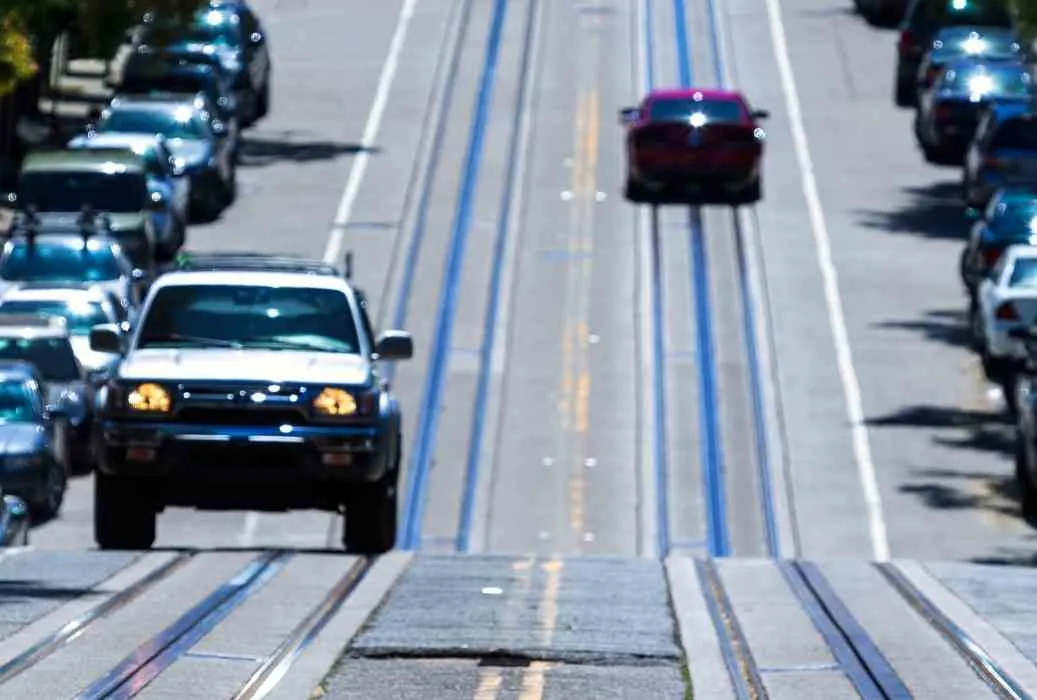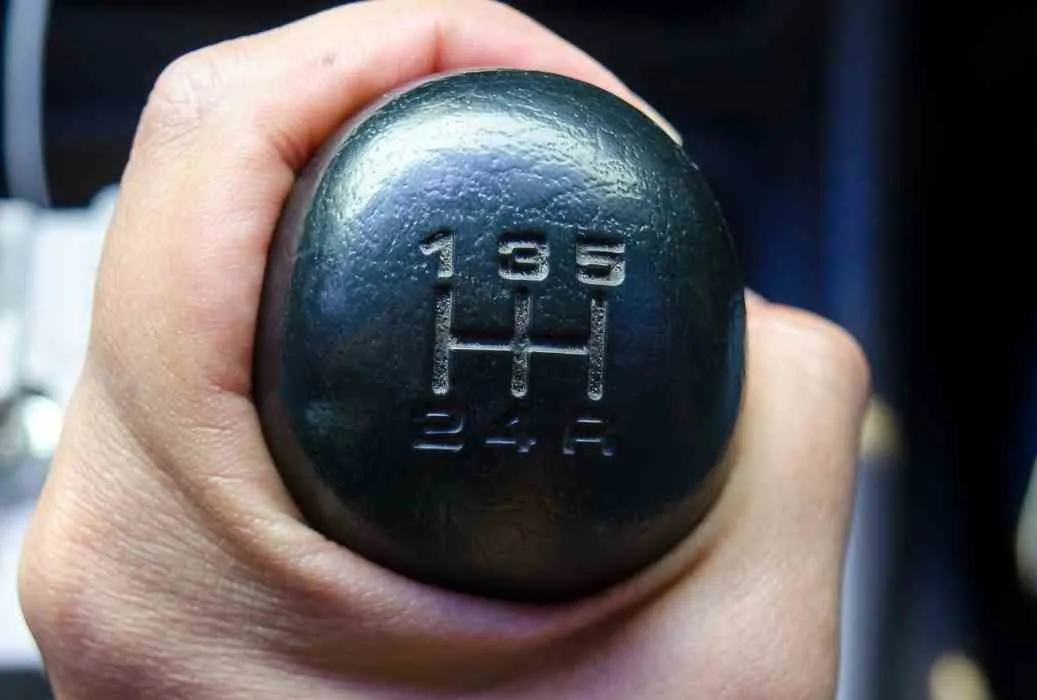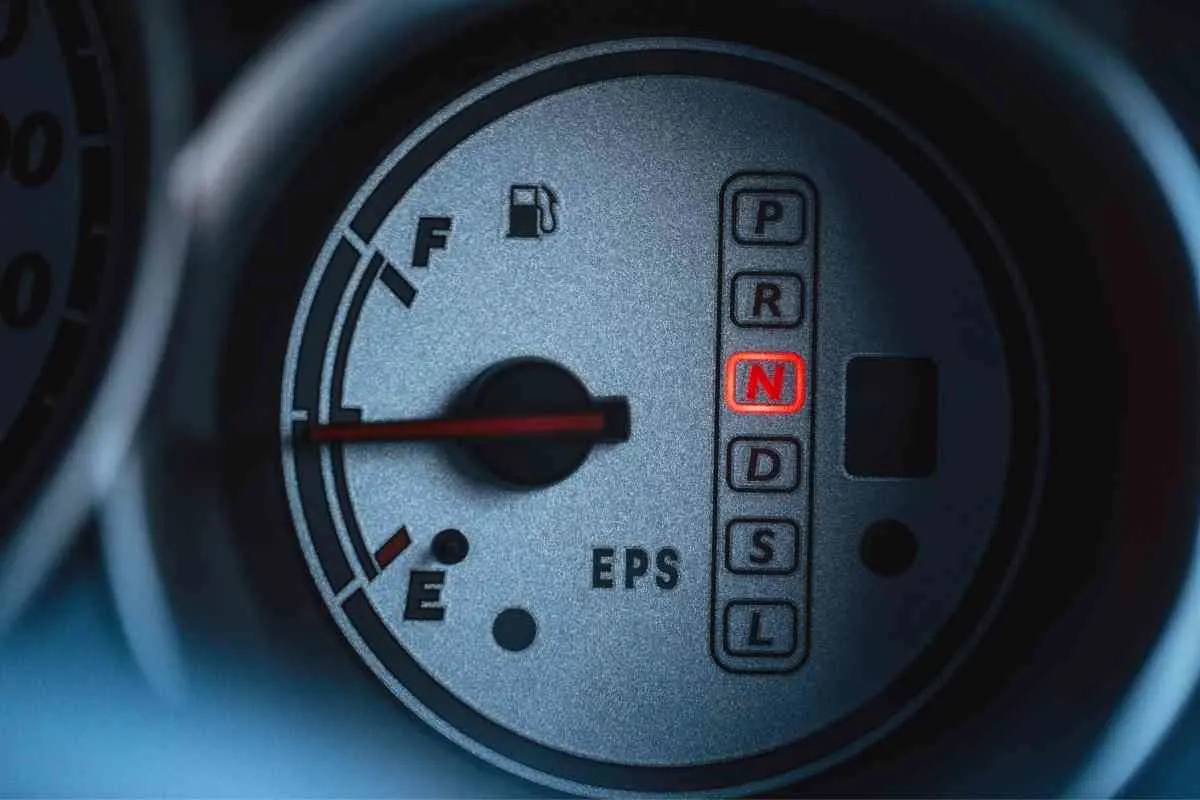You might’ve heard that coasting in neutral can help you save on fuel costs.
That’s been a popular myth for a long time.
However, we’ve looked into the matter and discovered it’s not true. Coasting in neutral won’t save any gas, and it could be dangerous.
But why is coasting in neutral bad for manual transmission vehicles?
Coasting in neutral, even in a manual, isn’t a good idea because you’re disengaging the engine from the transmission. If something happens on the road, you won’t be able to respond as quickly. Plus, you won’t save any fuel by coasting because while yes, your RPMs will decrease slightly, your pistons are still turning and burning fuel.
When you put the car in neutral, it disengages the engine from the transmission. Sometimes, you’ll notice that your RPMs decrease slightly.
That’s where the myth that coasting in neutral saves you on gas came from.
However, your engine’s pistons are still turning. In fact, they might turn faster whenever you’re going downhill.
The faster your pistons turn, the more fuel you’re burning. This is the same for both automatic and manual transmissions.
Simply pushing in the clutch could help you to save fuel somewhat. But, you’ll also wear out the clutch’s bearings a lot faster, too.
As a result, anything you’ve saved on fuel might end up going toward repairs.
Will I Save Gas Coasting In Neutral In A Manual Transmission Vehicle?

You will not save any money on gas coasting while driving. We can test this by measuring the car’s fuel injectors.
These pump fuel into the pistons each time they make a full revolution. Idling your car tends to burn about 1 gallon of fuel per hour.
Larger engines would burn fuel a little bit faster than that of course.
Measuring the fuel injectors while coasting has shown there’s no performance increase.
As such, you’re simply putting more wear on the engine. When you’re in neutral, the engine isn’t connected to the transmission.
Putting it back in gear while driving reengages the engine.
That could damage the transmission if you’re moving quickly. Transmissions aren’t designed to switch into gear while moving at speed.
They’re meant to switch from a complete stop. Going from neutral to 4th gear could put a lot of strain on it.
You might feel a sudden jerk whenever you’re doing something like that. That feeling is the result of the transmission slamming back into gear.
Normally, you won’t feel such a sudden jerk when transitioning into gear.
Still, the biggest reason you shouldn’t coast in neutral would be safety.
Coasting in neutral means you’ve got less control over your vehicle.
If something happens, it’ll take longer for you to respond. And, that means you’ve got a much higher chance of causing an accident.
Will Coasting in Neutral Damage the Transmission?

Your transmission should be fine if you’re coasting. However, other parts of your vehicle might suffer.
The most common culprits would be the throw-out bearing and your brakes.
A throw-out bearing is part of a vehicle’s clutch mechanism. It’s responsible for disengaging the engine whenever you’re pressing the clutch.
Each time your press it, the throw-out bearing is put under pressure.
Most of the time, you’ll engage the throw-out bearing while driving. However, you won’t engage it for that long. Coasting in neutral might not engage it.
But, a lot of people coast by depressing the clutch.
Coasting like this would use the throw-out bearing a lot more than usual.
Replacing a throw-out bearing isn’t a simple task, either. You’d have to take the whole clutch mechanism apart.
So, you’d have to spend quite a bit on labor for the repair.
Your brakes also suffer whenever you’re coasting in neutral. That’s because you’ve got to use them a lot more to slow down.
Typically, your engine provides a lot of your braking needs. That’s because engine braking absorbs most of your speed. Putting your car in neutral eliminates all engine braking. As such, you’ve got to use the brakes for all your stops.
They’ll wear out a lot faster if you’re coasting like this often. The more you’re coasting, the faster they’ll wear out.
Don’t worry about the transmission, though. Since your engine is still on, it should circulate transmission fluid.
As a result, your transmission shouldn’t have too many problems. That’s true in automatic transmissions and manuals.
Does Coasting in Neutral Damage Your Clutch?
As we mentioned, coasting could damage your clutch. However, coasting in neutral shouldn’t do much harm.
Putting the car in neutral shouldn’t engage the clutch at all.
However, trying to put your car back into gear could cause some clutch problems. Clutches aren’t designed to go from neutral into gear at high speeds.
So, you might cause the clutch to slip whenever you’re going into gear. This would cause it to wear out a lot quicker than it should.
If you try going into gear, you might smell something burning.
That’s coming from the clutch. You’re burning it by engaging the engine at such a high speed.
Is It Against the Law to Coast in Neutral?
A lot of people wonder whether it’s legal to coast in neutral? That depends on where you’re driving.
Federally, there aren’t any laws against it. However, your state might have something on the books.
Typically, there’s not anything against coasting in neutral. That doesn’t mean you should do it, though.
Most states require drivers to remain in control of their vehicles at all times.
It could be argued that you’re not in control while coasting in neutral.
So, it’s best if you avoid this type of behavior. That way, you won’t have to worry about breaking any laws.
Why Is Coasting in Neutral a Bad Driving Technique?
Plenty of people have heard that coasting in neutral will save them on fuel. However, that’s not the case. In fact, it’s actually a pretty bad habit for several reasons.
Above all, you’ll have less control over the car. That means you’ll be much more likely to get into an accident.
Switching from neutral into gear takes longer than usual. Going from one gear to another doesn’t take nearly as long.
Plus, you’ll still have some control regardless of which gear you’re in.
Besides losing control, you’ll also put more wear on your car. The biggest impact is going to be on its brakes.
Usually, your engine provides a good amount of your braking needs.
Engine braking isn’t possible while you’re coasting. So, you’ve got to apply the brakes a lot harder. The harder you’re applying them, the sooner you’ll need replacements.
You’ll also put more pressure on the throw-out bearings as well. These don’t normally take a lot of force.
They’re only meant to work while you’re shifting gears.
Switching into gear at high speed could also cause your clutch to burn. That might end up wearing a hole into its pocket. Then, you’d have to replace the entire clutch.
Finally, you’re not going to save any gas. Most modern vehicles utilize an electronic control module or ECM. These determine how much fuel to inject while you’re driving.
Since the engine remains on while in neutral, fuel is still injected into it. The ECM continues injecting fuel even while you’re in neutral.
So, you’re not saving anything by doing it. All you’re doing is wearing out the car and putting yourself in danger.
